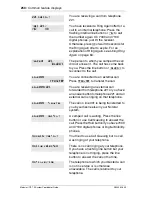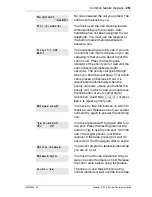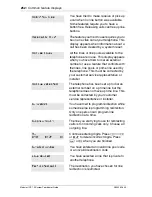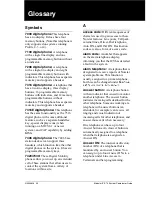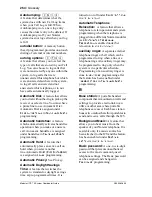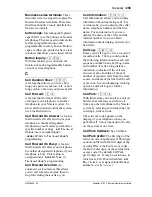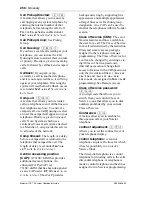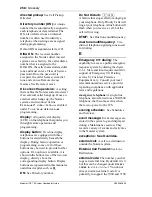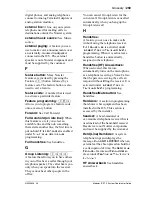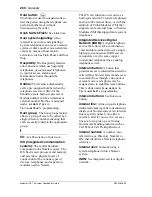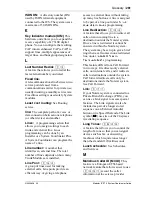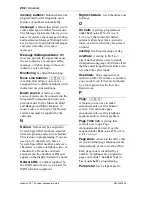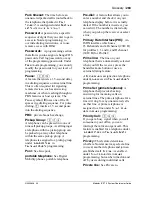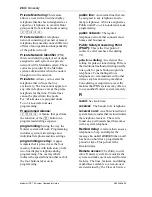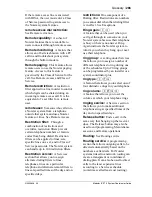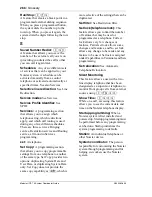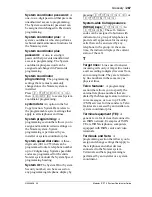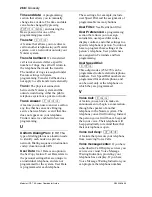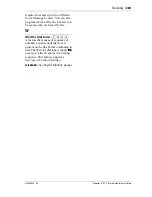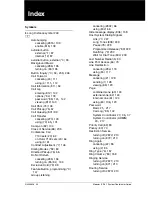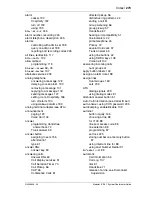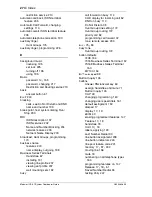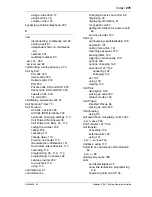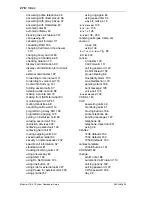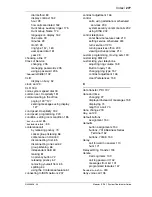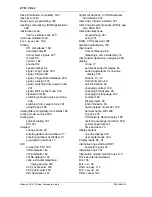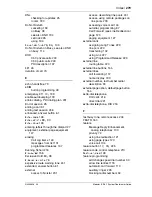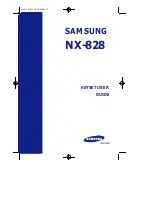
264
/ Glossary
Modular ICS 7.0 System Coordinator Guide
N0000626 03
Private Monitoring
This feature
allows a user with a two-line display
telephone that has been designated as a
supervisor telephone, to monitor Hunt
group calls from external sources using
≤•fifi‚
.
Private network:
A telephone
network consisting of owned or leased
telephone lines used to connect different
offices of an organization independently
of the public network.
Private Network Identifier
(PNI)
this is an identifying digit or set of digits
assigned to each system in a private
network with a Meridian system. These
codes are provided by the Meridian
system administrator when the node is
brought on to the network.
Private to:
Allows you to select the
telephone that will use the line
exclusively. The line cannot appear on
any other telephone, except the prime
telephone for that line. Private lines
cannot be placed into line pools.
Private lines
are assigned under
Trunk/Line
data in
Lines
programming.
Programmed release:
≤•°·
A feature that performs
the function of the
®
button in a
programmed dialing sequence.
programming:
Setting the way the
Norstar system will work. Programming
includes system-wide settings and
individual telephone and line settings.
programming overlay:
A paper
template that is placed over the four
memory buttons with indicators on the
two-line display telephone during
programming. The overlay labels
indicate the special function that each of
the four buttons takes on in
programming.
public line:
An external line that can
be assigned to any telephone and to
many telephones. A line is assigned as
Public under
Trunk/Line
data in
Lines
programming.
public network:
The regular
telephone network that connects most
homes and businesses.
Public Safety Answering Point
(PSAP):
This is the first point of
contact a caller reaches after dialing
911.
pulse/tone dialing:
An external line
setting for pulse or tone dialing. Pulse is
the traditional method of dialing used by
rotary-dial or push- button single-line
telephones. Tone dialing allows
telephones to communicate with other
devices such as answering machines.
Tone dialing is required to access the
features that PBX systems may offer or
to use another Norstar system remotely.
R
recall:
See Link time.
receiver:
The handset of a telephone.
receiver card:
An abbreviated list of
system feature codes that is stored under
the telephone receiver. The card is
found on a perforated sheet that comes
with a system telephone.
Remind delay:
A feature that causes a
telephone to beep and display the
message
On hold: LINENAM
when a call
has been on hold for a programmable
period of time. This period is the
Remind delay.
Remote access:
The ability to dial
into a Norstar system from outside the
system and make use of selected Norstar
features. The lines, features, and dialing
capabilities available to a remote user
are determined by the Class of Service.
Summary of Contents for 7316
Page 2: ......
Page 12: ...12 Modular ICS 7 0 System Coordinator Guide N0000626 03 Glossary 253 Index 271 ...
Page 26: ...26 Modular ICS 7 0 System Coordinator Guide N0000626 03 ...
Page 40: ...40 Modular ICS 7 0 System Coordinator Guide N0000626 03 ...
Page 96: ...96 Blocking Saved Number Redial Modular ICS 7 0 System Coordinator Guide N0000626 03 ...
Page 100: ...100 Using Call Queuing Modular ICS 7 0 System Coordinator Guide N0000626 03 ...
Page 136: ...136 Using Voice Call Modular ICS 7 0 System Coordinator Guide N0000626 03 ...
Page 196: ...196 Using Background Music Modular ICS 7 0 System Coordinator Guide N0000626 03 ...
Page 270: ...270 Glossary Modular ICS 7 0 System Coordinator Guide N0000626 03 ...

